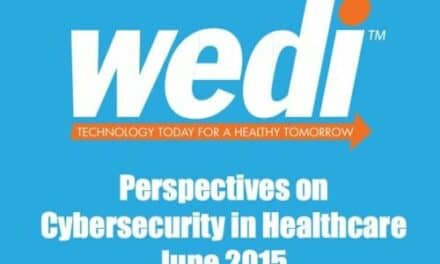By Binseng Wang, ScD, CCE, fAIMBE, fACCE
“Look, Look, Ma! I didn’t miss a day of class!” That is what the first twin said when he walked into the door, waving his report card. The second twin came in right behind him and shouted, “But I got better grades!”
How would you react if you were the parent? Do you think the first kid did better at school because he did not miss a single day but scored all C’s and D’s, whereas his twin was sick for a few days but received all A’s and B’s? (They’re obviously not identical twins!
I am raising this far-out analogy to help you reflect on the recent Centers for Medicare & Medicaid Services (CMS) mandate requiring all medical equipment, including devices classified as “non-critical” in the alternative equipment management (AEM) program, to have a 100% scheduled maintenance (SM) completion rate.
Looking Back
Until late 2016, The Joint Commission (TJC) did not require a 100% completion rate on SM for these devices (termed “non-high-risk,” or NHR). The corresponding element of performance (EP), EC.02.04.03-EP3, was classified as “C” in its “scoring category,” meaning that it was “scored based on the number of times a hospital is found not to be compliant.”
In practice, it was assumed that 90% SM completion is acceptable. Although if the surveyor found more than three overdue pieces of equipment amount 10 sampled, he/she could write up a Requirement for Improvement.
In the 2017 revision of its standards, TJC eliminated the scoring category classification—so its engineering director, George Mills, added a note stating that SM for NHR in AEM “may be deferred as defined by organization policy, provided the completion rate is not less than 90%.”
To his surprise, CMS rejected this note when it reviewed TJC’s proposed changes and demanded that all equipment—regardless of risk and maintenance program (AEM or otherwise)—have the same 100% SM completion rate. This suggests that CMS believes the SM for NHR equipment, such as pulse oximeters, NIBPs, or vital-signs monitors, is just as important as SM for “high risk” (HR) equipment such as ventilators, linear accelerators, or CT scanners. Furthermore, SM completion is essential for ensuring equipment safety and effectiveness when used on a patient.
The Sky Has Not Fallen—Yet!
Judging from the numerous Internet chats and ample participation in the webinars delivered by Mills, the clinical engineering (CE) community is both puzzled and concerned about this sudden change. Most CE professionals know that it is virtually impossible to achieve 100% SM completion for all equipment, especially for mobile and high-demand types, such as infusion pumps, sequential compression devices—and, during the flu season, ventilators and oxygen concentrators.
There are two possible solutions to increase the SM completion rate from 90% to 100%: One is to increase the amount of CE full-time equivalents while the other is to increase the amount of capital equipment; with the latter method, more equipment is likely to be available for SM. Unfortunately, neither option is likely given the current healthcare-industry financial crisis.
Some CE professionals have proposed to more aggressively use the protocols allowed by TJC to address equipment that cannot be located (CNL) or is in patient use (IPU). Mills has stated that the CE team can consider a SM “completed” if repeated attempts have been made to find a CNL equipment and notified the corresponding user department.
He also stated that the CE team can “defer” the SM for IPU equipment until the patient is done using it. While these are legitimate protocols to deal with real challenges, they could be abused—which, obviously, I’m not recommending or supporting.
Regardless of how the new CMS mandate can be accomplished, I am very concerned that instead of truly improving patient safety and outcomes, the 100% SM completion goal may actually backfire, leading to more patient incidents related to equipment failures. To understand my concern, we need to examine the rationale behind SM.
SM Rationale
There are two basic categories of SMs: One is the classical preventive maintenance (PM)—which aims to prevent future failures by replacing parts that have predictable deterioration—and other is safety and performance inspections (SPIs), which consist of actions aimed at detecting hidden failures and failures in progress.
PMs are typically beneficial for equipment with mechanical, pneumatic, or chemical components, while SPIs are typically beneficial for equipment with electrical or electronic components, as it is impossible to predict these failures. Some medical equipment requires both, however, because it incorporates multiple technologies.
While it may seem beneficial for patient safety to perform SMs as recommended by the OEMs at a 100% completion rate, it is not justifiable for three main reasons: First, as it has been discussed and proven many times before, OEMs tend to exaggerate on their SM recommendations to reduce their liability exposure without consideration for the associated expenses, since the healthcare providers bear the costs. Excessive SM can also be lucrative for some OEMs struggling to make their revenue targets with ever-decreasing sales of new equipment.
The second reason is less obvious but easy to understand. Each SM not only consumes CE professionals’ time, it also translates into equipment downtime. While taking an hour out of each infusion pump or patient monitor may not have a significant impact, four to six hours of SM time on a major piece of imaging equipment not only impacts the healthcare organization’s bottom line but could also severely cripple patient flow and even result in delayed care and irreversible harm to patients.
Few institutions are wealthy enough to acquire additional equipment just to allow for downtime caused by SM.
The third reason is “service-induced failure” (SIF). Like medical errors, CE professionals and OEM representatives can cause failures in the equipment they service. Although the incidence of SIFs seem to be very low, it can and has caused serious injuries and deaths.
Some of the SIFs were used by OEMs in their repeated attempts to convince the FDA to regulate all service providers. Performing more SM than necessary increases the number of SIFs and, thus, backfires on the 100% goal.
So let’s see how one should use available resources more efficient and judiciously—in other words, how to prioritize SM. The segregation of equipment into HR and NHR is a good start, but it could lead to a false sense of security. The fact that a piece of equipment is HR—or even life-support—does not mean that all the SMs planned for it are essential in terms of on-time completion.
Case in point: A ventilator may require an electrical safety test in the six-month SPI and an oxygen sensor replacement in the 24-month PM. The missing of an EST is clearly less critical than the oxygen sensor replacement, as excessive leakage current is extremely unlikely to cause any harm to the patient due to the lack of direct electrical pathway, while a depleted oxygen sensor could cause undue alarms or even hypoxia.
Therefore, the completion rate goals for these two SMs should be set at different levels. On the other hand, missing SM on NHR equipment could have a significant impact on patient safety. For example, a miscalibrated pulse oximeter could fail to detect hypo-oxygenation and allow the patient to become hypoxic for an extended period of time, leading to irreparable damage.
So, it would be desirable to schedule each SM action for every piece of equipment according to its actual needs (based on technological considerations), failure modes, and potential negative effects if it was missed (aka failure mode and effect analysis). This approach is known as reliability-centered maintenance (RCM), which some industries have adopted.
As I have explained in previous articles, while conceptually correct, RCM is not practical. Not only is it extremely laborious, most OEMs have declined to disclose the failure modes—and it is impossible for CE professionals to figure them out without access to the software embedded in the equipment. The practical alternative to RCM is evidence-based maintenance (EBM), which is based on empirical evidence.
How to Manage SM
Having examined the rationale behind SM and knowing that we can use EBM to prioritize it, let’s go back to the twins’ parents and see how they should react to the report cards. Obviously, the solution is not to convince the school to change its attendance rule to justify absences due to sickness or family emergencies, as we all know that learning is not related or caused by class attendance alone.
It would also be not helpful to convince the teachers to give As to every student regardless of learning. This is not only unethical, but also likely to discourage students from working hard to learn. The best approach for schools is to be honest and tell the students and their parents where the students stand and help them identify the challenges and find possible solutions.
The student with perfect attendance may have daydreamed or played games on his cellphone while in class, so he learned very little. His twin probably paid attention but had to miss some classes due to sickness; otherwise, she probably could have gotten straight As!
The same rationale applies to SM. We should be honest and measure our SM completion rates without any artifice, including clearly identifying the missed SMs due to CNL and IPU.
Next, we should report them to our supervisors and user department leaders with explanations why the SMs were missed (for instance, “due to CNL and IPU”), and seek their help to resolve these challenges. Then, we should implement some performance improvement actions based on their guidance, as well as suggestions from our own staff.
Finally, we should keep monitoring the SM completion rate to see if the solutions implemented worked and additional solutions are needed. Only by being honest and committing to continual improvement can we truly improve patient safety and outcomes. After all, attaining a 100% SM completion rate using administrative artifices is tantamount to “covering the sun with a sieve,” like the Brazilians say.
Binseng Wang, ScD, CCE, fAIMBE, fACCE, is director, quality and regulatory affairs with WRP32 Management, Inc. The views expressed in this article are solely those of the author. For more information, contact chief editor Keri Forsythe-Stephens at [email protected].
References
- Hall A. JC: Maintenance of Life-Support Equipment Must Be 100% On Time, Biomedical Instrumentation & Technology May-June 2007, 41:230-232
- Hayhurst C. Keeping Up with The Joint Commission, 24×7 Magazine, 22:22-24, January 2017
- Joint Commission Resources—JCR. 2016 Comprehensive Accreditation Manual for Hospitals. Joint Commission Resources, Oak Brook, IL
- Mills G. “Ask George.” Biomedical Instrumentation & Technology, 47:13, Jan./Feb. 2012
- Mills G. The Joint Commission Update. Slides presented at the 2016 Annual Meeting of the Association for the Advancement of Medical Instrumentation, Tampa, June 6, 2016.
- Wang B, Rui T, Koslosky J, Fedele J, Balar S, Hertzler LW & Poplin B. Evidence-Based Maintenance: Part IV—Comparison of scheduled inspection procedure, J. Clin. Eng., 38:108-116, 2013
- Wang B, Rui T & Balar S. An estimate of patient incidents caused by medical equipment maintenance omissions, Biomedical Instrumentation & Technology, 47:84-91, 2013
- Wang B. Evidence-based maintenance is CE’s moonshot. 24×7 magazine, 21:20-24, April 2016






Continued thanks to Binseng Wang for providing a voice of reason and intelligence !